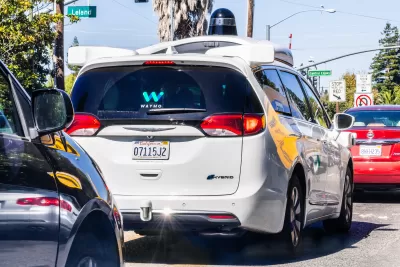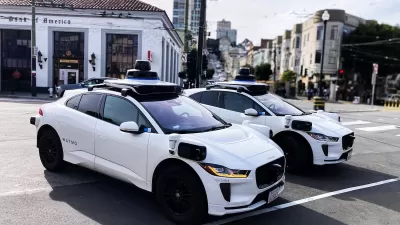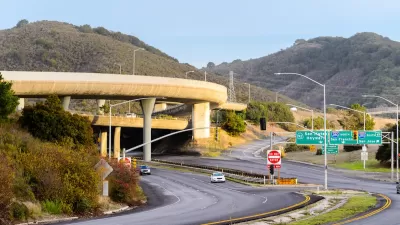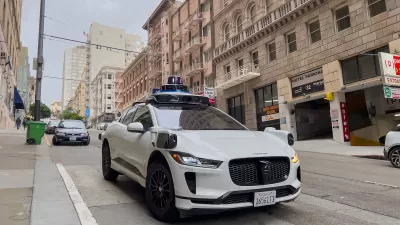As fleets of autonomous cars make their way onto city streets, the need to effectively regulate the technology is becoming more urgent.

Amidst the high-profile stories about Tesla’s self-driving cars, a quieter autonomous revolution is taking place on real city streets as companies like Cruise and Waymo introduce more and more robotaxis to the streets of San Francisco, Phoenix, and beyond. But unsurprisingly, writes Benjamin Schneider in MIT Technology Review, governments have been slow to catch up to the reality that robotaxis are here, now.
“I’ve come to believe that most people, including many powerful decision makers, are not aware of how quickly this industry is advancing, or how severe the near-term labor and transportation impacts could be,” Schneider says, adding, “Legal frameworks remain woefully inadequate: in the Golden State, cities have no regulatory authority over the robotaxis that ply their streets, and police legally cannot cite them for moving violations.”
Autonomous taxis have their perks, too. “The mere fact that these vehicles are programmed to follow traffic laws and the speed limit automatically makes them feel like safer drivers than a large percentage of humans on the road.” But their rapid proliferation calls for a discussion of the broader potential repercussions of the technology. For example, “This technology could make automotive transportation so cheap and easy that people decide to make more trips by car, increasing congestion and undermining public transportation. Traffic could be made even worse, San Francisco officials fear, by the many robotaxis double-parking as they await passengers, lacking the situational awareness of where and for how long it’s appropriate to stop.” Not to mention questions of labor or equity.
For Schneider, this is a change that must be addressed quickly. “It’s high time for the public and its elected representatives to play a more active role in shaping the future of this new technology.”
FULL STORY: Robotaxis are here. It’s time to decide what to do about them

Manufactured Crisis: Losing the Nation’s Largest Source of Unsubsidized Affordable Housing
Manufactured housing communities have long been an affordable housing option for millions of people living in the U.S., but that affordability is disappearing rapidly. How did we get here?

Americans May Be Stuck — But Why?
Americans are moving a lot less than they once did, and that is a problem. While Yoni Applebaum, in his highly-publicized article Stuck, gets the reasons badly wrong, it's still important to ask: why are we moving so much less than before?

Using Old Oil and Gas Wells for Green Energy Storage
Penn State researchers have found that repurposing abandoned oil and gas wells for geothermal-assisted compressed-air energy storage can boost efficiency, reduce environmental risks, and support clean energy and job transitions.

Updating LA’s Tree Rules Could Bring More Shade to Underserved Neighborhoods
A new USC study finds that relaxing Los Angeles’ outdated tree planting guidelines could significantly expand urban tree canopy and reduce shade disparities in lower-income neighborhoods, though infrastructure investments are also needed.

California's Canal Solar Projects Aim to Conserve Resources and Expand Clean Energy
California’s Project Nexus has begun generating electricity from solar panels installed over irrigation canals, with researchers and state agencies exploring statewide expansion to conserve water and boost clean energy production.

HHS Staff Cuts Gut Energy Assistance Program
The full staff of a federal program that distributes heating and cooling assistance for low-income families was laid off, jeopardizing the program’s operations.
Urban Design for Planners 1: Software Tools
This six-course series explores essential urban design concepts using open source software and equips planners with the tools they need to participate fully in the urban design process.
Planning for Universal Design
Learn the tools for implementing Universal Design in planning regulations.
Heyer Gruel & Associates PA
City of Moreno Valley
Institute for Housing and Urban Development Studies (IHS)
City of Grandview
Harvard GSD Executive Education
Salt Lake City
NYU Wagner Graduate School of Public Service
City of Cambridge, Maryland





























